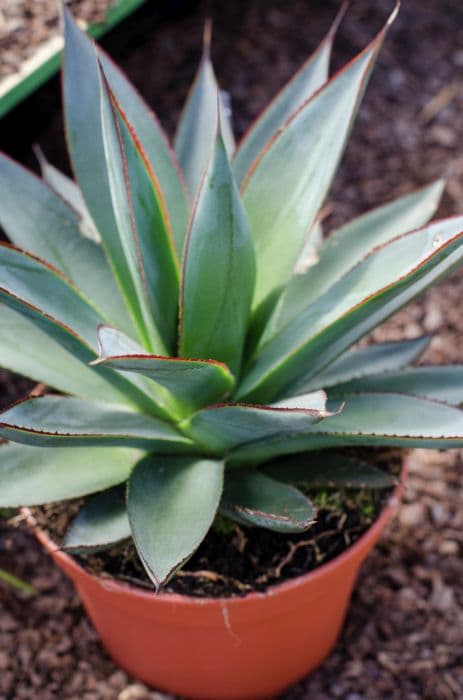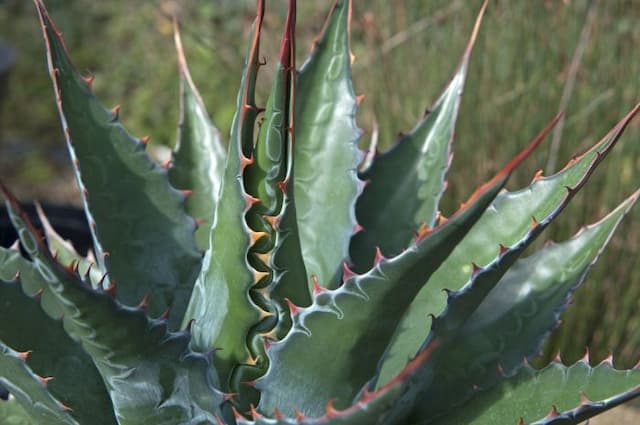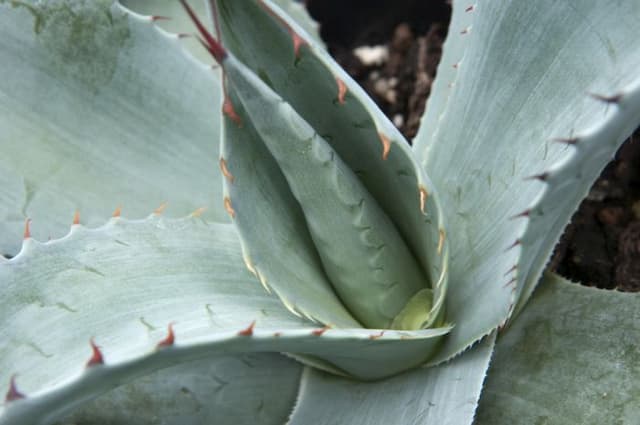Plantain Lily Hosta 'Moonlight' (fortunei) (v)

ABOUT
Hosta 'Moonlight', also known as Plantain Lily, is a perennial with a lush, mounded foliage habit. Its leaves are what set it apart; they are large, heart-shaped, and have a unique coloration. Each leaf displays an attractive light green to yellowish hue that can have an almost illuminating effect in shaded garden areas. The texture of the leaves is smooth with a glossy finish which helps to highlight their color in contrast to the greener shades of other garden plants. During the blooming season, Hosta 'Moonlight' produces delicate flowers that rise above the foliage on long, arching scapes. The flowers are typically a lavender or pale violet color, adding an extra layer of visual interest to the plant's overall appearance. The flower scapes themselves are slender and may have a subtle leaning or nodding habit. Overall, the bold foliage and complimentary delicate flowers contribute to a striking display in any shade garden.
About this plant
 Names
NamesFamily
Asparagaceae
Synonyms
Plantain Lily, Funkia, Giboshi
Common names
Hosta fortunei 'Moonlight'.
 Toxicity
ToxicityTo humans
Hostas, including the Hosta 'Moonlight', are generally not considered toxic to humans. They do not contain any known toxicants that would cause harm if touched or ingested in small amounts. However, like with any plant, individual allergies or sensitivities could exist, and consumption in large quantities could lead to stomach discomfort due to the plant's fibrous material.
To pets
Hostas are known to be toxic to pets, particularly to dogs and cats. If ingested, they can cause vomiting, diarrhea, and depression due to the presence of saponins. In some cases, the consumption of large amounts can lead to more severe symptoms and veterinary attention may be required. Pet owners should take precautions to prevent their animals from eating hostas.
 Characteristics
CharacteristicsLife cycle
Perennials
Foliage type
Deciduous
Color of leaves
Varies
Flower color
Lavender
Height
1-2 feet (30-60 cm)
Spread
2-4 feet (60-120 cm)
Plant type
Herb
Hardiness zones
3-9
Native area
Asia
Benefits
 General Benefits
General Benefits- Low Maintenance: Hostas are well-known for their ease of care, making them ideal for both novice and experienced gardeners.
- Shade Tolerance: Hosta 'Moonlight' thrives in shady areas where many other plants struggle, which makes it a valuable addition to woodland gardens.
- Drought Tolerance: Once established, it can tolerate periods of drought, reducing the need for frequent watering.
- Attractive Foliage: The plant features beautiful foliage that adds texture and color to gardens, even when not in bloom.
- Ground Cover: Its ability to spread makes it a good ground cover, reducing weed growth and soil erosion.
- Seasonal Interest: Hostas provide visual interest from spring to fall, with foliage that changes over the seasons.
- Versatility: This plant can be used in a variety of landscape designs, from borders to container plantings.
- Non-Invasive: Hostas grow well without becoming invasive, which makes them good neighbors to other plants in the garden.
- Visual Structure: They can serve as a focal point in garden design, offering structure and definition to garden beds.
- Wildlife Friendly: The flowers of the Hosta 'Moonlight' can attract pollinators like bees, adding to the biodiversity of the garden.
 Medical Properties
Medical PropertiesThis plant is not used for medical purposes.
 Air-purifying Qualities
Air-purifying QualitiesThis plant is not specifically known for air purifying qualities.
 Other Uses
Other Uses- The large, lush leaves of the Hosta can be used as a natural 'mulch' under trees and shrubs to retain soil moisture and suppress weeds.
- Hosta leaves can be used in floral arrangements for their interesting foliage, adding texture and greenery to bouquets.
- In arts and crafts, the distinctive leaves can be painted on or used as templates for garden-inspired designs.
- Hosta plants can serve as a living ground cover in shady garden areas where grass might struggle to grow.
- Incorporate Hosta leaves into a garden-themed tablescape or as part of the decor for outdoor dining, providing a lush, leafy backdrop for place settings.
- Hosta leaves can be used in natural dyeing processes, where they may impart subtle green hues to fabrics or paper.
- Due to their dense foliage, Hostas can be planted to define garden paths and borders, subtly guiding foot traffic through landscape design.
- The texture and color variations of Hosta leaves can be used in garden photography to create interesting focal points or backgrounds.
- Hosta plants can be used in container gardens to provide a foliage-dominant display that contrasts with flowering plants.
- Young, small Hosta leaves can be used as a natural garnish for garden-themed dishes or presentations, though they are not recommended for human consumption.
Interesting Facts
 Feng Shui
Feng ShuiHostas can be used in Feng Shui to bring a sense of calm and balance. Their lush foliage is regarded as cooling which can help to reduce the overall yang energy of a sun-drenched area, promoting a tranquil and restful environment. In particular, their rounded leaves symbolize wealth and abundance, making them a good choice to plant in the wealth areas of the garden, which according to Feng Shui is the southeast sector. The 'Moonlight' variety, with its light-colored leaves, can also be used to introduce brightness in shady areas, potentially attracting positive chi (energy) into darker spaces.
 Zodiac Sign Compitability
Zodiac Sign CompitabilityThe Hosta is not used in astrology practice.
 Plant Symbolism
Plant Symbolism- Resilience: Hostas are known for their hardiness and ability to thrive in various conditions, symbolizing the capacity to endure and adapt to life’s challenges.
- Self-reliance: With its ability to grow in shade and relatively low maintenance requirements, the hosta represents self-sufficiency and independence.
- Peace and tranquility: The lush foliage and cool colors of the 'Moonlight' Hosta create a calming effect, making it a symbol of serenity and relaxation.
- Devotion and loyalty: Hostas can live for many years and return each spring, often regarded as emblems of fidelity and steadfast commitment.
- Forgiveness: In some cultures, the enduring nature of the hosta, which easily recovers from damage, can represent forgiveness and the ability to overcome past hurts.
 Water
WaterHosta 'Moonlight' should be watered thoroughly, ensuring the soil is evenly moist but not waterlogged. During the growing season, typically from spring to fall, it's best to water them once a week with about one gallon per plant or more during hot, dry periods. Always check the top inch of soil for dryness before watering; if it feels dry, it's time to water. They require less water as they enter dormancy in late fall and during winter, so reduce watering frequency accordingly. Avoid overhead watering to prevent leaf diseases, and aim to water early in the morning to allow foliage to dry during the day.
 Light
LightHostas, including 'Moonlight', thrive in partial to full shade. The ideal spot for this plant is in an area that receives dappled sunlight or morning sun and afternoon shade. They can tolerate some morning direct sunlight but should be protected from the harsh midday and afternoon sun which can scorch their leaves.
 Temperature
TemperatureHostas, like 'Moonlight', prefer moderate temperatures and do well in conditions ranging from 50°F to 75°F. They can survive in temperatures as low as 30°F, but should be protected from frost. During the heat of summer, ensure that they have adequate shade to keep temperatures cooler around the foliage.
 Pruning
PruningPruning 'Moonlight' hosta is mostly for aesthetic purposes and to remove any dead or damaged leaves. Prune in early spring to remove dead foliage from the previous season. Also, after flowering, spent flower stalks can be cut back to the base to maintain a tidy appearance. The best time for pruning is before new growth starts in spring or immediately after flowering.
 Cleaning
CleaningAs needed
 Soil
SoilHostas prefer a soil mix that is well-draining, rich in organic matter, and has a slightly acidic to neutral pH range of 6.0 to 7.0. A good soil recipe would be a mixture of garden soil, compost, and perlite or pine bark fines to ensure adequate drainage.
 Repotting
RepottingHostas, including the 'Moonlight' variety, should be repotted every few years or when they outgrow their container. It is best to repot in the early spring before the leaves fully unfurl.
 Humidity & Misting
Humidity & MistingHostas like 'Moonlight' tend to thrive in average to high humidity levels typical of outdoor environments, though they do not require excessively high humidity and are quite adaptable to varying conditions.
 Suitable locations
Suitable locationsIndoor
Place in bright, indirect light, keep soil moist but not wet.
Outdoor
Plant in partial shade, ensure well-draining soil, mulch.
Hardiness zone
3-9 USDA
 Life cycle
Life cycleHosta 'Moonlight', commonly known as plantain lily, begins its life as a dormant eye (bud) in a fleshy underground rhizome. In spring, leaves emerge and unfurl into a lush mound of foliage, which is the main ornamental feature of the plant. Throughout late spring to early summer, stalks grow above the foliage, culminating in bell-shaped flowers that bloom for a few weeks, attracting pollinators. Following pollination, seed pods may develop and disperse seeds, but many gardeners choose to remove flower stalks to maintain foliage beauty. In fall, the foliage begins to die back as the plant enters dormancy, conserving energy in the rhizome throughout the winter. The cycle repeats each spring when the growing conditions are favorable.
 Propogation
PropogationPropogation time
Early Spring
Propogation: The Hosta 'Moonlight', commonly known as Hosta or Plantain Lily, is best propagated through division, which is most effectively done in the spring or early fall. To propagate by division, begin by gently digging up the entire hosta plant, being cautious not to damage the root system. Next, use a sharp knife or spade to divide the plant into smaller sections, ensuring each division has at least two or three shoots and a portion of the root system. Replant the divisions immediately at the same soil depth they were previously growing and water them well. This method allows the divisions to establish their root systems before the stress of summer heat or winter cold.









